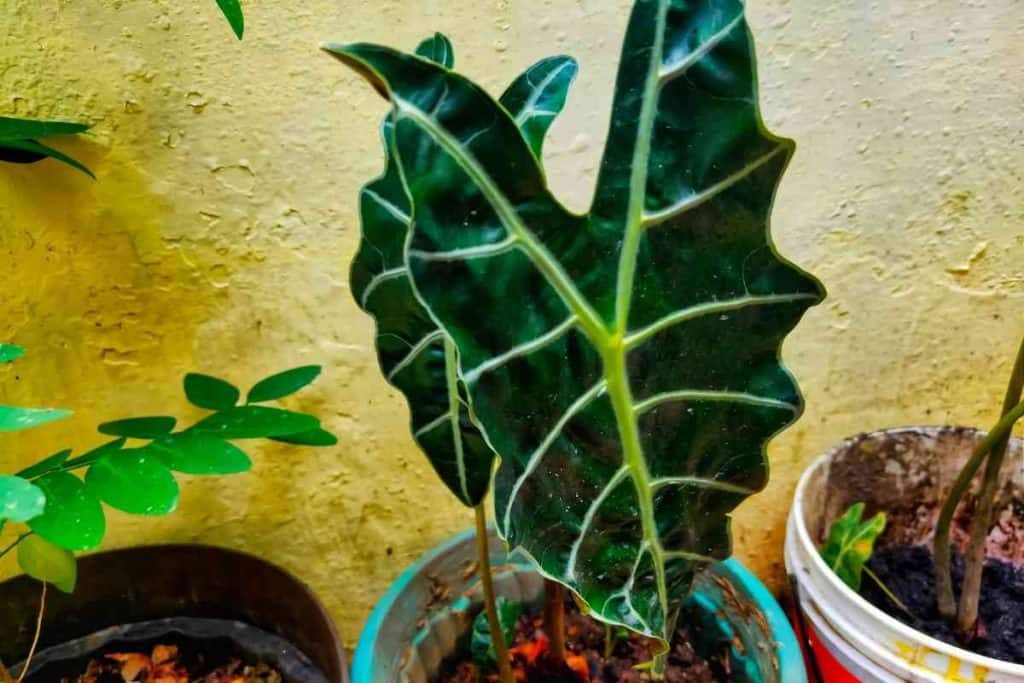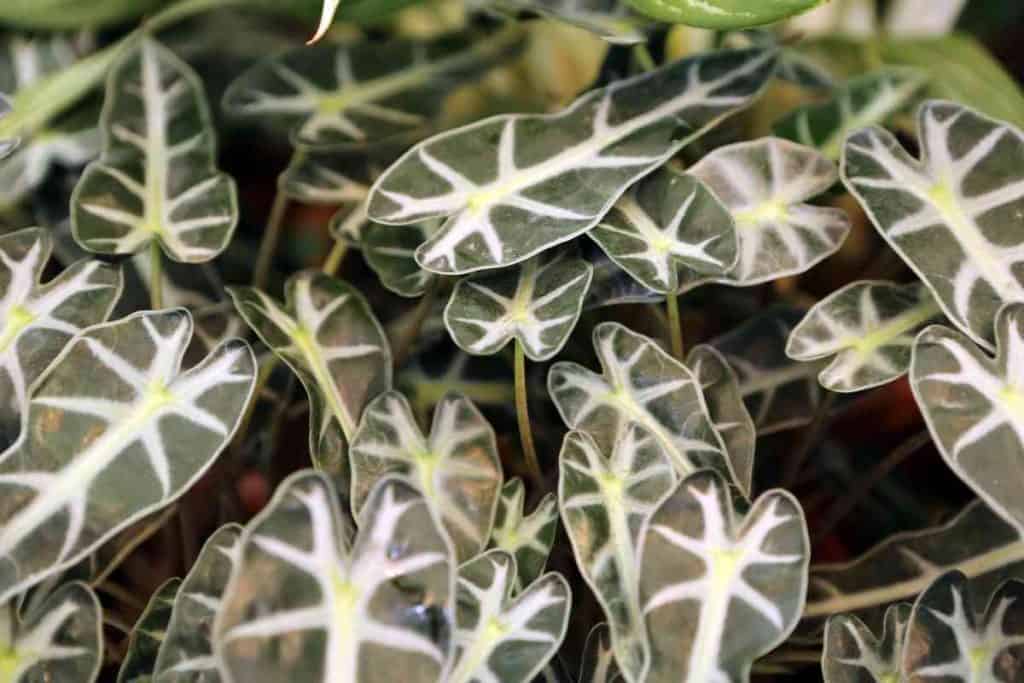Are you searching for a great plant that is truly eye-catching? Think no further than the genus Alocasia species.
Alocasia Polly and alocasia amazonica are among the most popular and attractive alocasia varieties. They are hybrid plants that are quite tricky to care for yet are worth every dime you spend on them. But what is the difference between alocasia Polly vs amazonica?
Both plants are similar in many ways, with the most notable difference coming from their sizes and leaf sizes. Alocasia Polly is a cultivar of the alocasia amazonica hybrid, where its name is gotten from. Put simply, alocasia Polly is a smaller version of the bigger alocasia amazonica variety.
More details on that later!
Table of Contents
What is Alocasia Polly?
Alocasia Polly is an evergreen exotic hybrid of the alocasia genus, which has its origin in the Asian region. It is quite an attractive plant that can grow up to just 20 inches tall and has dense foliage.
It also features beautiful dark green leaves that possess showy veins and borders with shades of white to grey color.
The alocasia Polly is a fascinating prospect for indoor planting, be it in pots or containers. It can also be grown outdoors under partial shelter conditions in USDA zones 3 to 11.
The plant features significant scalloped edges and arrow-shaped tips that make them even more attractive. Its leaves shape is why it is popularly called the Elephant Ear plant and African Mask plant.
What is Alocasia Amazonica?

Let’s introduce you to yet another unique plant from the alocasia genus family, the Alocasia amazonica.
Like other alocasia varieties, it is native to the Asian region. It is hybrid cultivation, although its parent plants ‘Alocasia longiloba and Alocasia sanderiana, are most common around the tropical Asian regions.
Because of its features, it is mostly called Alocasia Polly or African Mask, or Elephant Ear. Like the Polly species, the Amazonica is quite tricky to grow and requires a moderate watering routine during the growing season, when the surface is dried.
It also thrives under bright, indirect light and requires just a few applications of general houseplant fertilizer twice a month and adequate temperature conditions.
Alocasia Polly Vs Amazonica
The table below shows some of the key differences between alocasia polly vs amazonica:
| Alocasia Polly | Alocasia Amazonica |
| Its mature height is 2 feet tall and wide. More compact than amazonica. | Its mature height is 2 to 3 feet tall and wide, depending on care, and less compact than Polly |
| Has slightly dwarfed leaves than that of amazonica | Has slightly taller leaves than that of the alocasia Polly |
| It forms folds and crests on its sides | Does not form folds and crests on its sides. |
| Features slightly less grey-colored veins and sometimes a burgundy color underside. | Features more grey-colored leaf veins than that of Polly. |
| Slightly shorter flowers than that of the amazonica | Slightly taller blooms than that of the Polly. |
Differences Between Alocasia Polly and Amazonica

Despite coming from the same family and the obvious similarities drawn from both alocasia varieties, especially at their tender age, they are not entirely the same, though, as there are still glaring differences that can be drawn.
As we earlier mentioned, one of the most notable differences is the size of the leaves. The alocasia Polly leaves are a bit more dwarfed than that of alocasia amazonica.
But you can only notice this difference when the plants are completely matured. Also, Polly forms folds and crests on its sides, unlike the amazonica.
In terms of leaf color, the only difference you can spot from both plants is that alocasia amazonica features much more grey-colored veins than the alocasia Polly, and sometimes the underside of the former is burgundy.
Again, even though they rarely produce a flower, if they eventually do, that of the amazonica is often slightly bigger than that of the Polly species.
In terms of the general size of both plants, the alocasia Polly is a typically dwarfed species of the amazonica variety, as it (Polly) can only grow up to 2 feet tall and wide, compared to that of the amazonica, which is slightly taller at 3 feet and 3 feet wide. Those are the only differences that can be spotted from these lovely houseplants.
How are Alocasia Polly and Amazonica Similar?
As we mentioned earlier, these plants possess similar characteristics. Despite the few differences highlighted above (which you can only often tell during their adult stages), you can hardly differentiate between the alocasia Polly and amazonica.
Their similarities can come in form of their leaf shapes, leaf colors, blooms, growth habits, height & structure, and even toxicity.
In terms of leaf shape and texture, as earlier mentioned, the only difference between both varieties happens to be at the leaf corners, where the Polly forms folds and crests on its sides, unlike the amazonica. Aside from that, both have huge, waxy, and arrow-shaped leaves forming from long single stems.
Another similarity between them is leaf color, where both feature dark green color with silver color lining or veins. They also feature a rich-purple underside. Both rarely bloom, but when they do, their blooms are often small and made up of green spadix and white color spathe.
Both varieties do best in a humid environment and need enough bright, indirect, and filtered light. Temperatures shouldn’t go below 50 to 55 degrees Fahrenheit.
Both plants also have a wide structure. They are toxic to humans and pets when consumed, as they have compounds like calcium oxalates, which irritate.
Related Posts:
- How to Care for Alocasia Bambino
- Alocasia Sinuata Vs Baginda
- Alocasia Sumo Care and Growing Tips
- Alocasia Maharani Care and Growing Tips
- Alocasia Azlanii Care and Growing Tips




